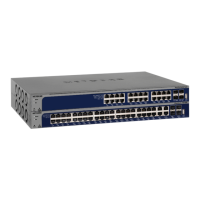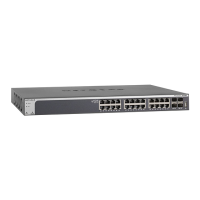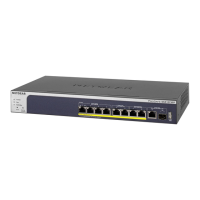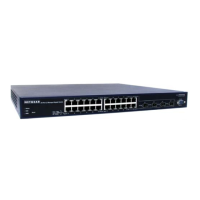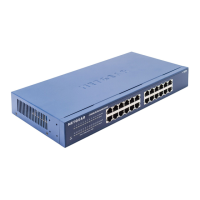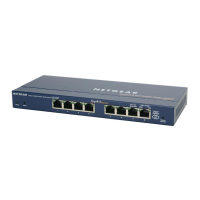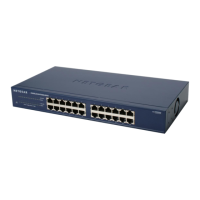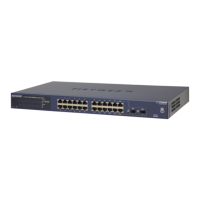Monitor the System
373
XS708T, XS712Tv2, and XS716T Smart Managed Pro Switch User Manual
The Memory Log page displays.
6. Next to Admin Status, select one of the following radio buttons:
• Enable. Enable system logging.
• Disable. Prevent the system from logging messages.
7. From the Behavior menu, specify the behavior of the log when it is full.
• Wrap. When the buffer is full, the oldest log messages are deleted as the system logs
new messages.
• Stop on Full. When the buffer is full, the system stops logging new messages and
preserves all existing log messages.
8. From the Severity Filter menu, select one of the following severity levels:
• Emergency (0). System is unusable.
• Alert (1). Action must be taken immediately.
• Critical (2). Critical conditions.
• Error (3). Error conditions.
• Warning (4). Warning conditions.
• Notice (5). Normal but significant conditions.
• Informational (6). Informational messages.
• Debug (7). Debug-level messages.
Note: A log records messages equal to or above a configured severity threshold.
9. Click the Apply button.
The updated configuration is sent to the switch. Configuration changes take effect
immediately.
The Memory Log table displays on the Memory Log page.
The Total number of Messages field displays the number of messages the system logged
in memory. Only the 200 most recent entries are displayed on the page.
The rest of the page displays the Memory Log messages. The format of the log message
is the same for messages that are displayed for the message log, persistent log, or
console log. Messages logged to a collector or relay through syslog support the same
format as well.
The following example shows the standard format for a log message:
<14> Mar 24 05:34:05 10.131.12.183-1 UNKN[2176789276]:
main_login.c(179) 3855 %% HTTP Session 19 initiated for user admin
connected from 10.27.64.122
The number contained in the angle brackets represents the message priority, which is
derived from the following values:
Priority = (facility value × 8) + severity level.

